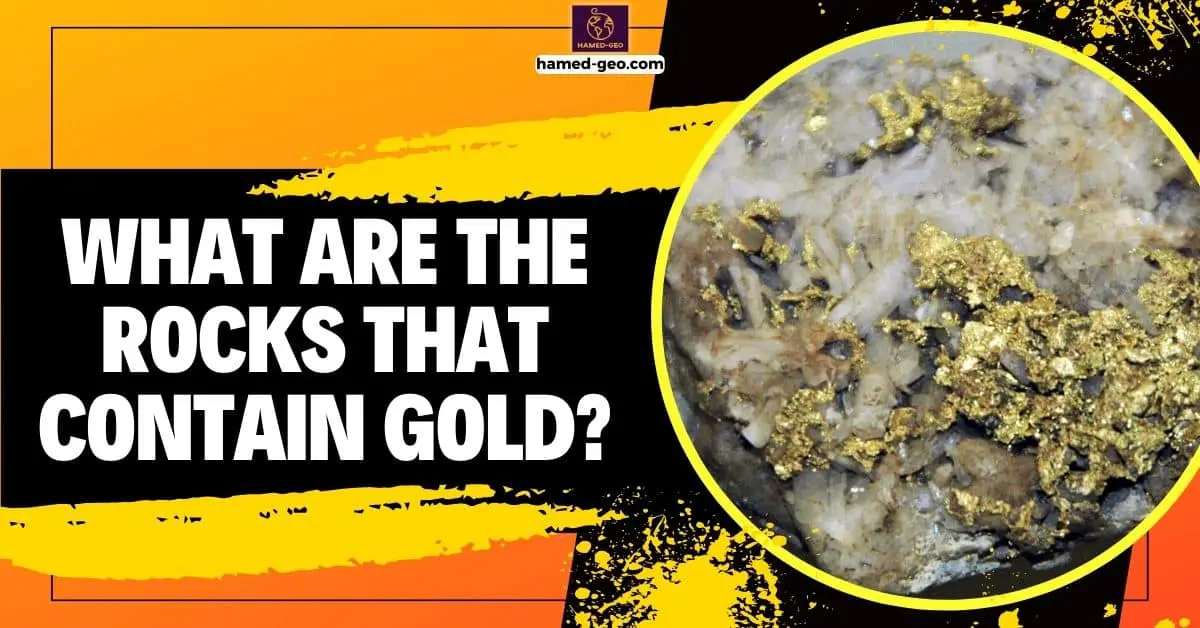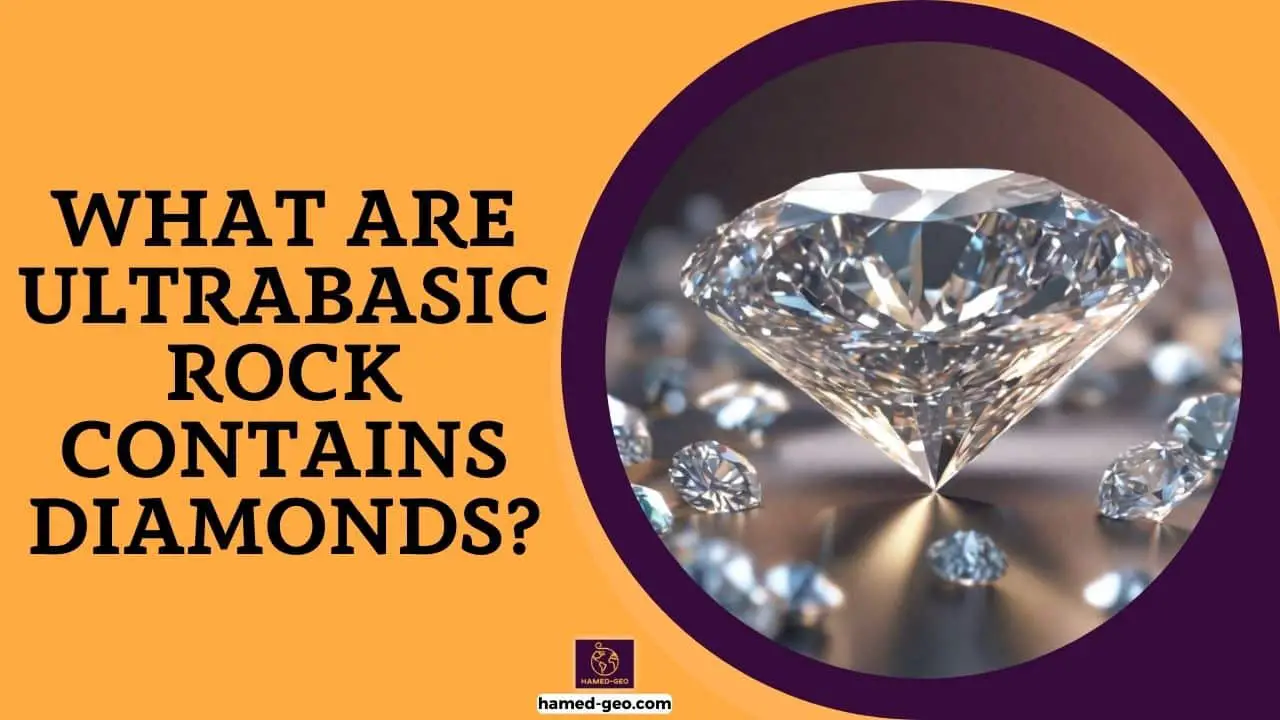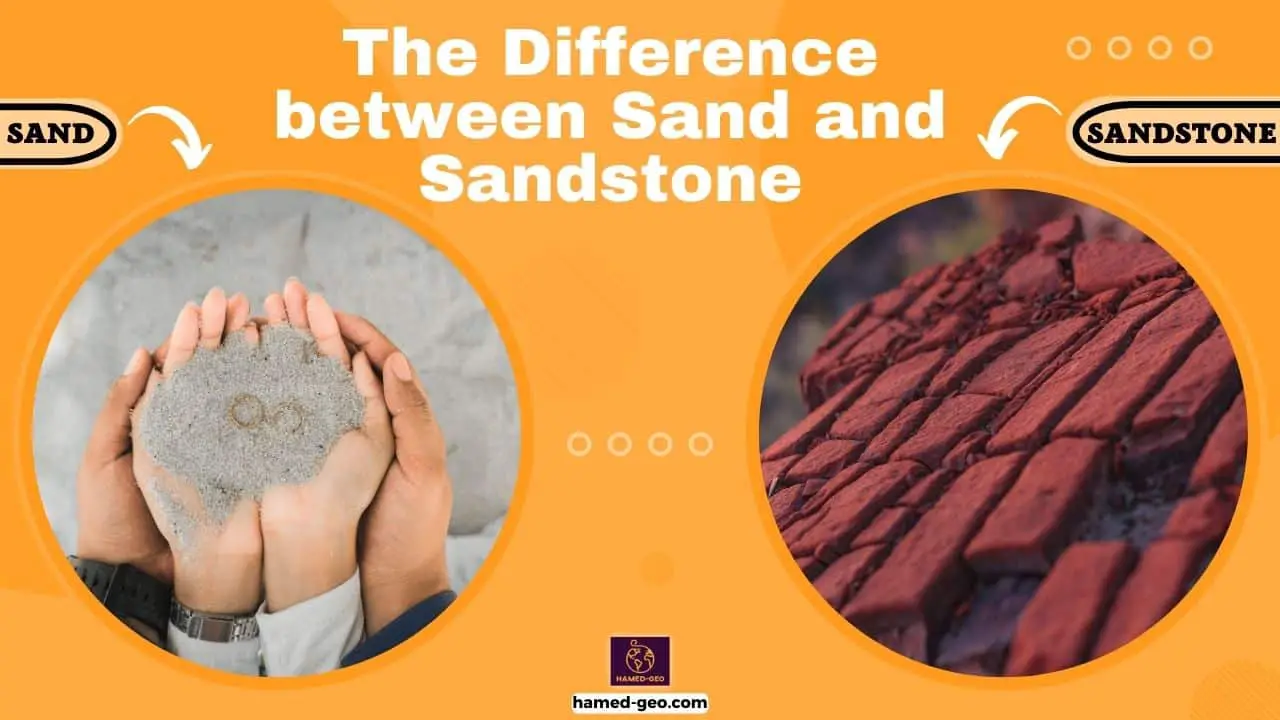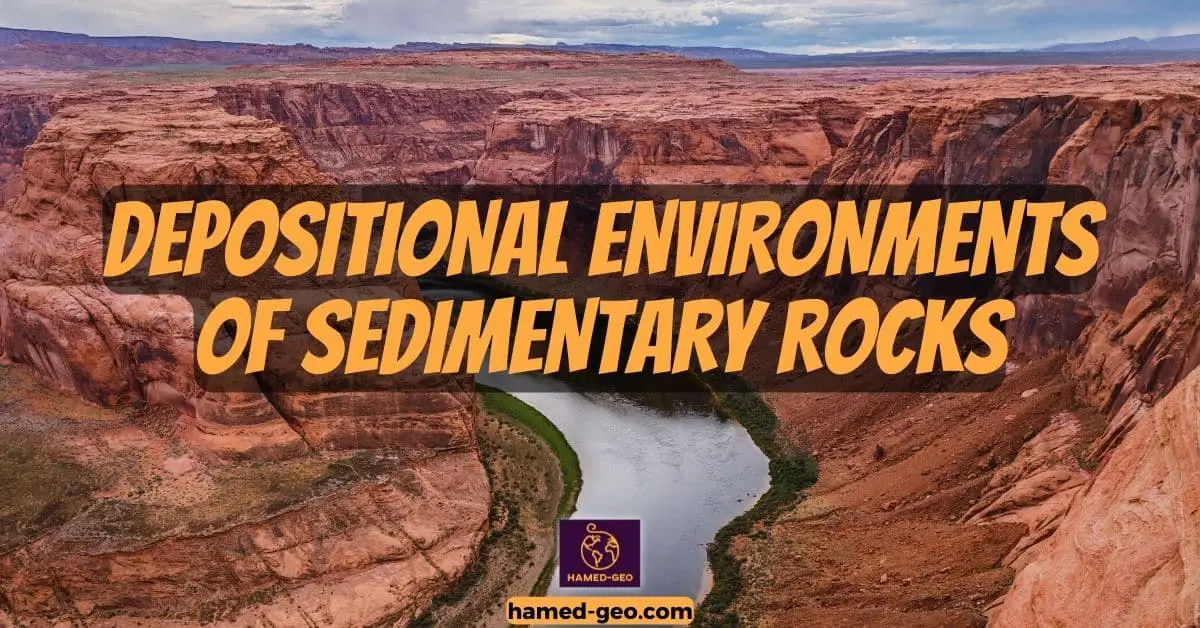Welcome to our blog post on “What are the rocks that contain gold?” Gold has been a valuable commodity for thousands of years, and throughout history, people have been fascinated by the idea of finding gold in rocks. In this blog post, we will provide an overview of the different types of rocks that contain gold, how to identify them, and where to find them.
Learn here how is gold formed geologically.
Gold has been a symbol of wealth and prosperity for many civilizations throughout history. Today, it continues to hold its value as a precious metal and is used in various industries, including technology and jewelry making. It is also a popular activity to find gold in rocks, known as gold prospecting.
Our purpose is to provide you with a comprehensive understanding of the rocks that contain gold, including their types, characteristics, and how to find them.
Types of rocks that contain gold
Gold is a valuable metal that has been sought after for centuries. While gold can be found in many different forms, one of the most common ways to find it is in rocks. In this section, we will explore the different types of rocks that contain gold and the characteristics that make them ideal for gold deposits.
1- Quartz Veins
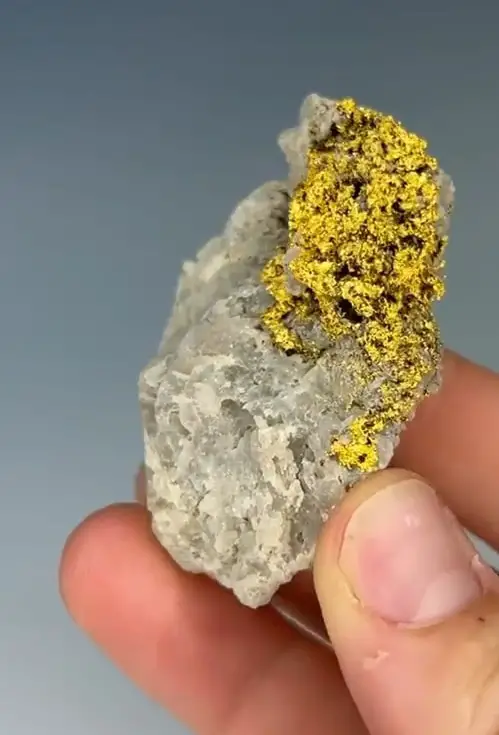
Quartz veins are one of the most common types of rocks that contain gold. They are formed when hot fluids containing gold and other minerals are forced into cracks in the earth’s crust. As the fluids cool, they deposit minerals like quartz and gold. The gold in quartz veins is often found in small particles and can be difficult to extract.
One characteristic that makes quartz veins a good candidate for gold deposits is their high resistance to weathering. Quartz veins are often found in hard, durable rocks that are resistant to erosion, which means that they can remain intact for long periods of time, preserving the gold within.
2- Volcanic Rocks
Volcanic rocks, such as andesite and basalt, can also contain gold deposits. These rocks are formed when magma from the earth’s mantle rises to the surface and cools. As the magma cools, it can trap minerals like gold within the rock.
One characteristic that makes volcanic rocks a good candidate for gold deposits is their ability to contain pockets of concentrated minerals. As the magma cools, minerals can become concentrated in certain areas, leading to the formation of gold deposits.
3- Sedimentary Rocks
Sedimentary rocks, such as shale and sandstone, can also contain gold deposits. These rocks are formed from the accumulation of sediment, often in bodies of water like rivers and oceans. As the sediment is compacted and cemented together, it can trap minerals like gold within the rock.
One characteristic that makes sedimentary rocks a good candidate for gold deposits is their ability to contain large amounts of mineral-rich sediment. These rocks can often contain layers of mineral-rich sediment, which can be mined to extract gold and other valuable minerals.
4- Greenstone Belts
Greenstone belts are geological formations that consist of a variety of different rock types, including volcanic and sedimentary rocks. These belts are often found in regions of the earth’s crust that are rich in gold deposits. Greenstone belts can contain gold in several different forms, including quartz veins and disseminated gold deposits.
One characteristic that makes greenstone belts a good candidate for gold deposits is their geological history. Greenstone belts are formed in areas where tectonic activity has caused the earth’s crust to shift and bend, creating areas of high pressure and temperature. These conditions can lead to the formation of gold deposits.
5- Skarn Deposits
Skarn deposits are another type of rock that can contain gold deposits. Skarns are formed when hot fluids from magmas or hydrothermal fluids interact with carbonate-rich rocks like limestone. As the fluids cool, they can deposit minerals like gold, copper, and zinc within the rock.
One characteristic that makes skarn deposits a good candidate for gold deposits is their association with other valuable minerals. Skarns can contain several different minerals in addition to gold, which can make them a more valuable target for mining companies.
6- Orogenic Gold Deposits
Orogenic gold deposits are gold deposits that are formed during mountain-building events, known as orogenies. These events occur when tectonic plates collide and push against each other, causing the earth’s crust to fold and deform. Orogenic gold deposits can be found in a variety of rock types, including quartz veins, sedimentary rocks, and volcanic rocks.
One characteristic that makes orogenic gold deposits a good candidate for gold extraction is their association with structural features like faults and fractures. These features can act as pathways for mineral-rich fluids, leading to the formation of gold deposits.
Famous gold-bearing rocks
Gold has captivated the imaginations of people around the world for centuries, and it continues to be one of the most valuable and sought-after precious metals in the world. While gold can be found in many different types of rocks, there are certain rocks that have become famous for their abundance of this precious metal. In this section of the blog post, we’ll take a closer look at some of the most famous gold-bearing rocks in the world.
Witwatersrand Basin
One of the most famous gold-bearing rocks in the world is the Witwatersrand Basin, which is located in South Africa. This basin is estimated to contain as much as 50% of all the gold ever mined in the world, making it one of the most productive gold mining regions on the planet. The Witwatersrand Basin is unique because it is composed of a very old and stable layer of rocks that have been folded and deformed over millions of years. This geological activity created fissures and faults that allowed gold-bearing fluids to flow through the rock, depositing large amounts of gold along the way.
Carlin Trend
Another famous gold-bearing rock is the Carlin Trend, which is located in Nevada. The Carlin Trend is known for its unique geology, which includes a series of sedimentary rocks that have been metamorphosed by heat and pressure. The rocks in the Carlin Trend are characterized by their high concentrations of sulfide minerals, which are often associated with gold deposits. Over millions of years, hot fluids filled with gold and other minerals flowed through the rocks, depositing large amounts of gold in the process.
Mother Lode
The Mother Lode is a famous gold-bearing rock formation located in the Sierra Nevada foothills of California, USA. The Mother Lode is a zone of hydrothermal vein formation that stretches over a hundred miles and is up to 2.5 miles wide in some areas. The rocks in this area were formed as a result of a series of geological events that occurred about 70 million years ago, including volcanic activity and the formation of fault zones. The rock in this area is primarily quartz, but also contains other minerals such as pyrite, chalcopyrite, and galena, which are associated with gold deposits.
Tarkwa Mine
The Tarkwa Mine is located in southwestern Ghana and is one of the largest gold mines in Africa. The rocks in this area are sedimentary and have been heavily mineralized with gold deposits. The sedimentary rocks were formed during the Precambrian period, about 2.1 billion years ago, and were later uplifted and eroded, exposing the gold-bearing rocks. The ore body at Tarkwa is a sheet-like deposit that is up to 1,500 meters long and up to 400 meters wide. Gold is found in association with other minerals such as pyrite, arsenopyrite, and chalcopyrite.
Super Pit
The Super Pit is a large open-pit gold mine located in Western Australia, near the city of Kalgoorlie. The rocks in this area are a mix of sedimentary and volcanic rocks that have been mineralized with gold deposits. The Super Pit is one of the largest gold mines in the world and has produced over 50 million ounces of gold since it began operation in 1989. Gold is found in association with other minerals such as pyrite, galena, and sphalerite.
Where to find rocks that contain gold
For many people, the idea of finding gold in rocks is a dream come true. While finding gold in the wild can be challenging, there are certain places and geological features that can increase your chances of success. In this section of the blog post, we’ll provide some tips on where to look for rocks that contain gold and how to identify them.
Near known gold deposits
One of the best places to look for rocks that contain gold is near known gold deposits. Gold is often found in veins or seams that run through specific types of rock formations, so if you know where to find these formations, you’re already one step ahead. Many gold mines are located in mountainous regions with rock formations that have been folded and faulted over millions of years, creating the ideal conditions for gold deposits to form.
Streams and rivers
Another place to look for rocks that contain gold is in streams and rivers. Over time, gold can be eroded from its original source and carried downstream by water, where it may accumulate in sand and gravel deposits. Look for areas where the water flow slows down, such as eddies and behind large rocks, as these are the places where gold is most likely to settle.
Quartz veins
In addition to location, knowing how to identify rocks that might contain gold is also important. Some rocks that contain gold are easy to spot because of their distinctive colors and textures. For example, quartz veins that contain gold are often milky white or gray in color and have a shiny metallic luster. These rocks may also have visible gold particles or veins of gold running through them.
Igneous rocks
Igneous rocks like granite and basalt can sometimes contain small amounts of gold in their mineral composition. Gold is usually found within the crystals of other minerals within the rock, and extracting it can be challenging due to the hardness of the surrounding material.
Sedimentary rocks
Sedimentary rocks like sandstone and shale may also contain gold, but in much smaller quantities than the previously mentioned rocks. The gold in these rocks is often found as tiny particles or flakes within the sediment, and extraction requires crushing and chemical treatment to separate the gold from the rock matrix.
It is worth noting that while these rocks may contain gold, they are not typically the primary targets for gold prospecting. Instead, they are often found in areas where gold-bearing veins or deposits are known to exist, and prospectors may use them as an indicator of potential gold-rich areas.
Finding rocks that contain gold can be a challenging but rewarding experience. By knowing where to look and how to identify potential sources of gold, you can increase your chances of success. Remember to always follow proper safety precautions when exploring in the wild, and if you do find a promising source of gold, be sure to follow local regulations and obtain any necessary permits before beginning any mining activities.
How gold is extracted from rocks
When most people think of gold mining, they imagine prospectors panning for gold in a river or stream. While this is certainly one way to find gold, the vast majority of gold in the world is actually extracted from rocks using a variety of different methods. In this section of the blog post, we’ll take a closer look at how gold is extracted from rocks.
Comminution process
The first step in extracting gold from rocks is to crush and grind the rock into a fine powder. This process is known as comminution, and it is necessary to expose the gold particles to the chemical processes that will be used to extract the gold. The comminution process can be accomplished using a variety of different machines, including crushers, mills, and grinders.
Cyanide leaching
Once the rock has been ground into a fine powder, the next step is to use chemicals to separate the gold from the other minerals in the rock. One of the most commonly used chemicals for this process is cyanide, which is used in a process known as cyanide leaching. In this process, the finely ground rock is mixed with a dilute solution of cyanide, which dissolves the gold and other precious metals in the rock.
Gravity separation
Another method that is commonly used to extract gold from rocks is gravity separation. In this process, the finely ground rock is placed in a centrifuge, which separates the heavier gold particles from the lighter minerals in the rock. This process is often used in combination with cyanide leaching, as it can help to increase the overall efficiency of the gold extraction process.
Flotation
Flotation is a technique that involves adding certain chemicals to the crushed rock to create a foam that will trap the gold particles. The foam is then collected and processed to recover the gold. This method is commonly used for sulfide ores, which can be difficult to process using other methods.
Bioleaching
Bioleaching is a method that uses bacteria to break down the sulfide minerals in the rock, releasing the gold particles. This technique is more environmentally friendly than traditional methods, but it can be slower and less efficient.
Roasting
Roasting involves heating the crushed rock to a high temperature in the presence of air or oxygen. This process oxidizes the sulfide minerals, releasing the gold particles. Roasting can be an effective method for processing certain types of gold-bearing ores, but it can also be expensive and energy-intensive.
The choice of method will depend on various factors, including the type of rock being mined, the amount of gold present, and the desired purity of the final product. Some methods may be more effective or efficient than others, and some may be more environmentally friendly. In any case, the extraction of gold from rocks is a complex process that requires careful planning and execution to ensure that the most gold possible is recovered with minimal environmental impact.
In conclusion, understanding what types of rocks contain gold is crucial for anyone interested in gold prospecting. By knowing where to look and how to identify potential sources of gold, you can increase your chances of success. We encourage readers to share their own experiences with finding rocks that contain gold and to continue exploring the fascinating world of geology and mineralogy.
